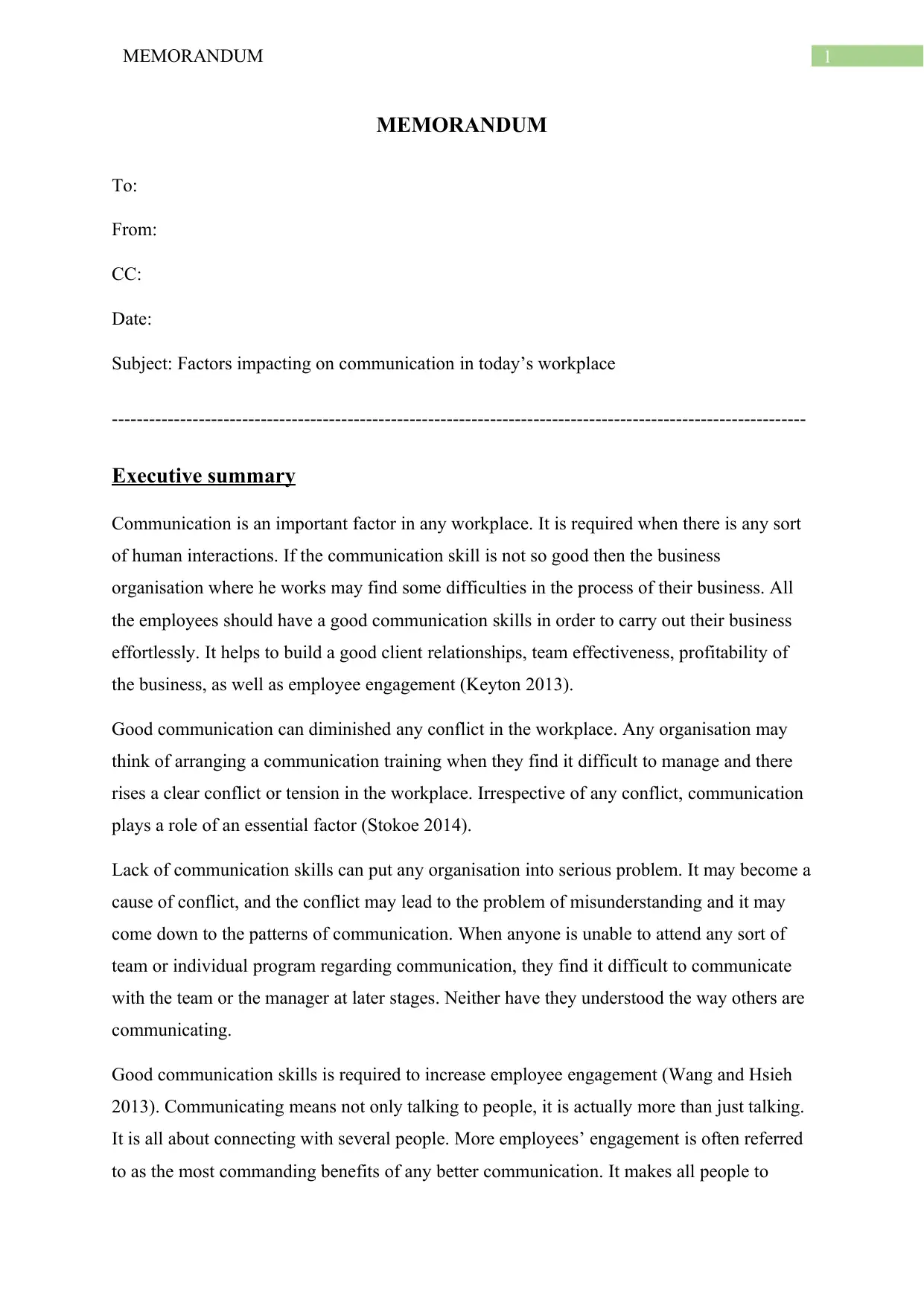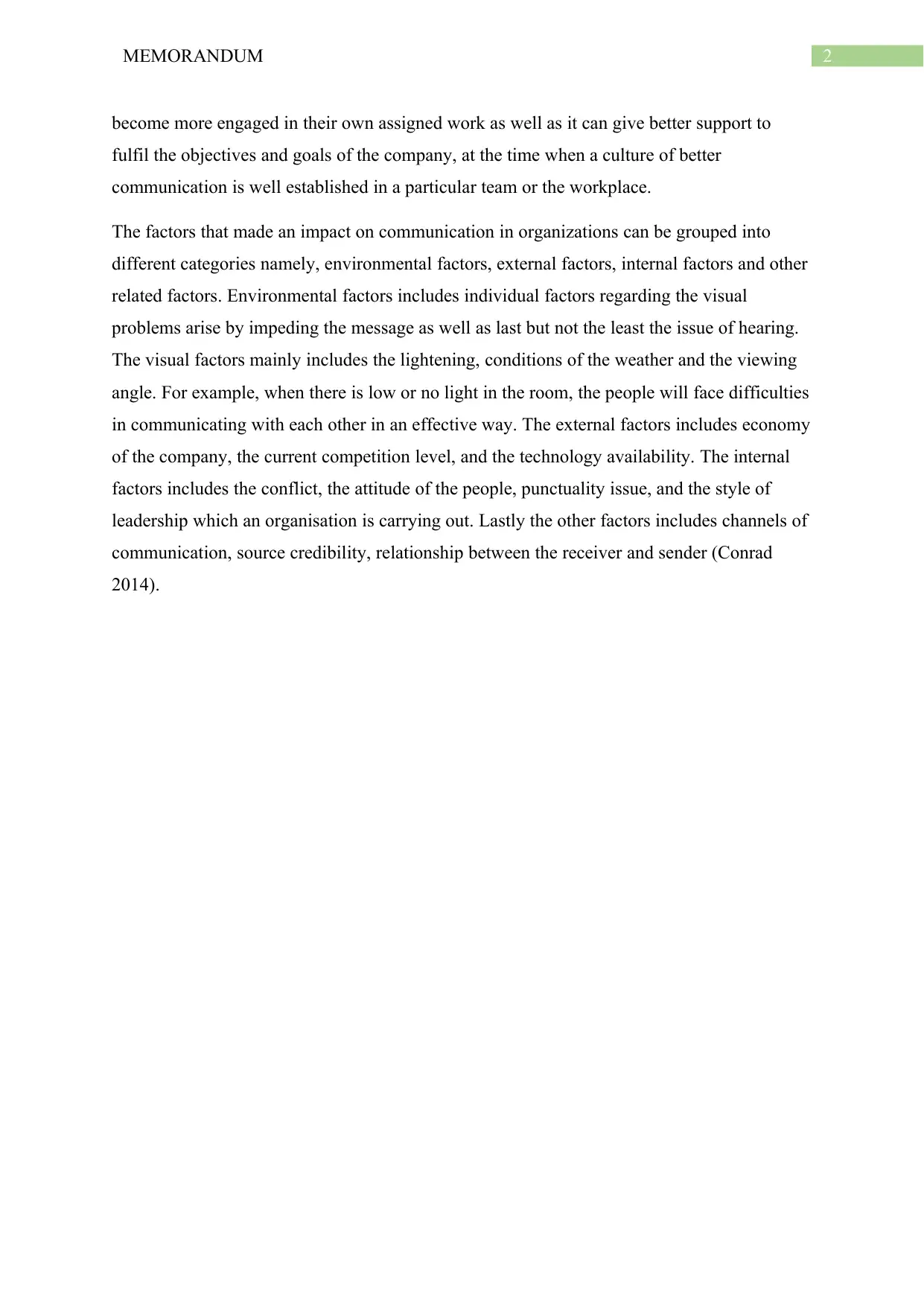Factors Impacting on Communication in Today's Workplace - Memorandum
VerifiedAdded on 2023/04/12
|4
|605
|83
Report
AI Summary
This memorandum examines the crucial role of communication in the workplace and its impact on various aspects of business operations, including client relationships, team effectiveness, and employee engagement. It emphasizes that effective communication is essential for conflict resolution and overall organizational success. The report categorizes the influencing factors into environmental (visual and auditory), external (economic, competitive, technological), internal (conflicts, attitudes, leadership styles), and other related factors (communication channels, credibility, and sender-receiver relationships). The memorandum highlights the importance of communication training and its benefits in enhancing employee engagement and achieving company goals. The document draws from various research papers to support its arguments, including the importance of good communication skills, its relation to employee engagement, and the impact of various factors on communication in organizations.
1 out of 4











![[object Object]](/_next/static/media/star-bottom.7253800d.svg)